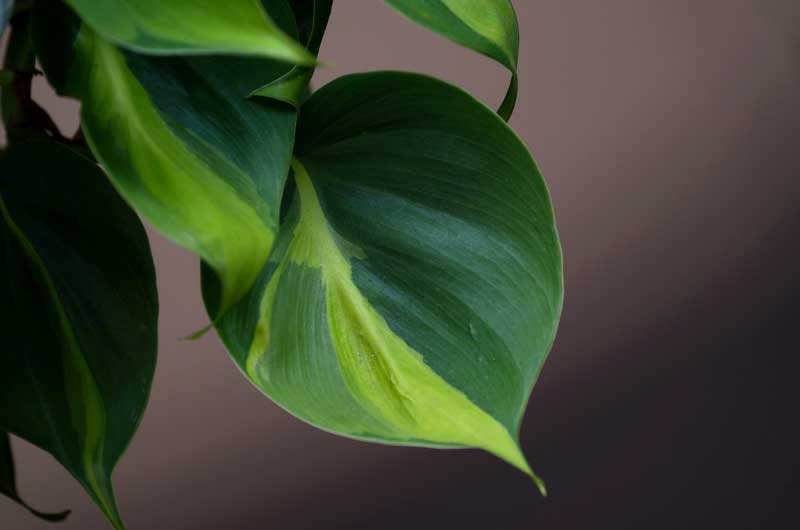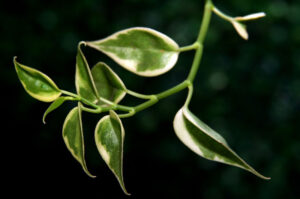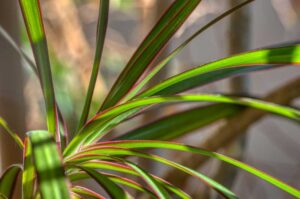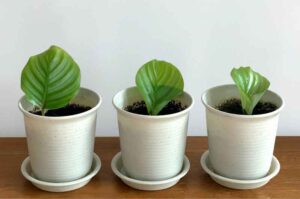Why Are My Philodendron Leaves Small? (Causes and Solutions)
Philodendron is known for its beautiful, large leaves and has various species, with various kinds of foliage. But due to various reasons, the leaves might remain smaller than their usual size. This article will discuss all the probable causes which result in smaller Philodendron leaves.
Your Philodendron leaves are getting smaller because of insufficient light, low temperatures, low humidity levels, and sometimes also the absence of enough fertilizer. Very often, the Philodendron plants kept in dark or dimly lit rooms suffer from the problem of small-sized leaves.
Many people also choose to place Philodendron plants in bathrooms and very often, these bathrooms are not big enough and have small windows that are rarely opened. This also hampers the growth of Philodendron plants and leaves remain smaller.

Why are my Philodendron leaves small?
Philodendron plants are known to be able to grow normally in dimly lit conditions, such as in various corners of the house, but such conditions are not really healthy for them. As mentioned before, there are various reasons why the Philodendron leaves may be small. In the next part of this article, a look shall be taken at these various reasons and how to solve them efficiently.
Insufficient light
This is one of the prime reasons Philodendron leaves are small. Very often, they are placed in corners of rooms, or even bathrooms, and receive very little or no sunlight throughout the day.
Dimly lot conditions hamper their growth and as a result, the leaves are small and the plants spread out more and more.
Solutions
The only way to solve this problem is by placing the plant in a well-lit place where it will get enough sunlight and also a suitable temperature. The preferred range of temperature for a Philodendron plant is around 60° F – 80° F.
It should be noted that the plant should be exposed to bright, but indirect sunlight as direct sunlight often results in the scorching of their leaves. The plant should not be kept in a place with a temperature lower than 55° F.
Insufficient Humidity
The right level of humidity results in the proper growth of Philodendron plants and also helps the leaves to be of normal, large size.
Philodendron plants prefer humidity levels of 60% and higher. Philodendron plants are also known to grow in humidity levels as low as 40% but such levels are definitely not preferred and neither are they healthy for the plant.
Fortunately, Philodendron plants are not too choosy about humidity levels or temperature but it is preferred to maintain the right temperature and the right level of humidity.
Solutions
The plant should be placed in a location where the right level of humidity is maintained. As mentioned before, they can make do with 40% humidity but in levels of 60% or above, they thrive and are known to grow large, lush leaves that will attract eyeballs.
The plant should also be watered properly and on a schedule but the soil should not become moist. You can also use humidifiers or pebble trays, which will help you maintain the right level of humidity and promote the growth of the plant.
You may also like this article- Do Philodendrons Like To Be Misted?
Settling of Dust on the leaves
Dust is another factor that adversely affects the growth of Philodendron plants by settling on the leaves. What happens is that the dust collected on the leaf forms a layer that prevents the leaves from performing photosynthesis properly and this greatly affects the growth of the plant. This results in smaller leaf growth.
Solutions
What needs to be done is that a microfiber cloth should be used to dust the plant about once a month, and it is best to keep the plant in a place where there is comparatively less pollution or less dust and dirt. This will remove the dirt or dust that has settled on the leaves and help the Philodendron plant to produce good energy more efficiently.
Improper watering
An important step that needs to be taken to ensure that the Philodendron plant has leaves of normal size is that it needs to be watered properly, on a daily basis and the Philodendron plant should not be overwatered or underwatered. This is very important.
However, watering your Philodendron plant is not as easy as it sounds, because how much you should water it, or how frequently you should water the plant depends on factors such as temperature, time of the year, and also humidity. Overwatering the plant also hampers the growth of plant.
Solutions
There are various ways to decide whether a particular time is a right time to water your plant or not and how much you should water it.
One of them is by testing the top of the soil, that is, the first two to three inches of the soil and if it feels dry to the touch of your finger, then, you can go ahead and water the soil. On the other hand, if the soil feels wet to the touch of your finger, then the plant should not be watered for some days, that is until the soil dries up.
If you are not too sure about whether you should water the plant or not, you can also choose to use a moisture meter. The moisture meter is used to measure the moisture content of the soil. The meter is stuck into the soil and if the reading shows dry, then you can go ahead and water the plant.
Lack of essential micronutrients
Various micronutrients are essential to the growth of Philodendron plants and for their leaves to be of normal size. The various micronutrients which are important are calcium, magnesium, and potassium. The lack of these micronutrients hampers the growth of the plant greatly.
Sometimes, continuous planting of trees also results in the nutrients of the soil being consumed, and then, when a new batch of Philodendron trees are planted, there are not enough essential micronutrients left for them.
Solutions
This can be solved by using various added products that will help restore the normal level of these micronutrients in the soil. There are various fertilizers, that can be added to the potting soil to improve the fertility status, and provide the necessary micronutrients to the plant.
Plant is pot-bound
This is a common problem in Philodendron plants when it comes to the size of leaves being smaller than normal. Very often Philodendron plants become pot-bound and this results in the growth being inhibited, their leaves becoming smaller and the plant looking less healthy and lush.
When roots of Philodendron plants take over the pot and begin to grow in circles, it slowly suffocates the plant. However, this can easily be solved by the following process.
Solutions
The only way of solving this problem is by repotting the plant carefully and by closely following all necessary instructions.
The plant must be lifted out of the pot and it must be observed whether it has any knotted roots or not. These entangled roots inhibit the growth of the plant and the plant now needs to be planted in a new pot that is preferably a few inches bigger than the last one. Well draining soil, that is loose and rich in organic material should be used for replanting.
Incorrect temperature
Philodendron plants prefer a temperature range of 60°F to 80° F. They can grow in temperatures as low as 55° F but that is not healthy for the plant and therefore not advised.
Solutions
They should be placed in a place with bright, indirect sunlight and away from places with cool drafts. The place should be warm and humid but not too hot as scorching heat can burn the leaves badly.
How to make your philodendron leaves bigger?
There are various ways that are quite effective when it comes to making your Philodendron plant fuller and its leaves bigger. Let us dig deep.
- Pruning – Just like for any other plant, pruning proves effective for Philodendron as well. The pruning should be at planned intervals and monthly moderate pruning is effective in most cases. Pruning helps promote the growth of the plant. It can work fantastically on the health of your Philodendron plant and help greatly to grow bigger leaves in a very short time.
- Usage of a nitrogen-based fertilizer – Nitrogen is very important when it comes to the growth of plants and helping the plants maintain their best health. Thus, it is advised to use a fertilizer that is rich in nitrogen. Natural compost can also be used, made out of household waste.
How do Philodendron leaves grow?
Philodendron plants have ungrooved stems and new leaves can be seen growing from an extended leaf sheath or an extended base of a leaf. After the new leaf had grown, the old leaf sheath dries and falls off, since it has served its purpose.
What is the best time or season for planting or growing Philodendron?
Philodendrons are tropical plants and they are best to grow in summer or spring. That is, it should be planted in the season of summer or spring so it can grow as best as possible. Philodendron plants are known to have slow growth in winter but steady growth in summer and spring. Thus, these two seasons are preferred for growing Philodendron plants.
Conclusion
Therefore, factors such as temperature, time of the year, humidity, and correct use of fertilizer, are all very important when it comes to the growing of Philodendron plants achieving the right sized leaves, and helping the plants maintain optimum health. Thus, all they require are the right conditions and some care and they will grow to produce lush green leaves that are bound to attract eyeballs.






